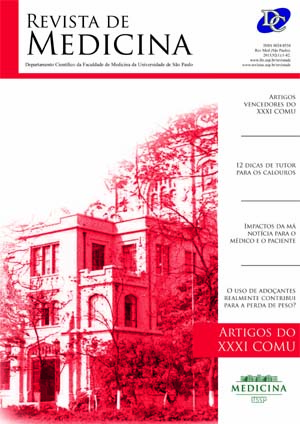Medical environment: bad news’ impact on patients and doctors – towards an effective model of communication
DOI:
https://doi.org/10.11606/issn.1679-9836.v92i1p13-24Keywords:
Truth disclosure, Communication, Education, medical, Stress, psychological, Physician-patient relationship.Abstract
Breaking bad news is part of physicians’ routine; however, its impact on both doctors and patients is not well-known. With that knowledge, physicians would be able to convey such news more effectively. This study aims to review physiological and psychological impacts of breaking bad news on both doctors and patients, and strategies to improve communication skills and minimize those effects. Physicians, while breaking bad news, may have increases in heart rate, mean arterial pressure and cardiac output in such an expressive way that it might be a risk factor for hypertension. Cortisol levels and immune responses were also found to be enhanced in these situations. Doctors declared that giving bad news involved a risk of losing control in different ways, concerning emotions, professionalism and confidence. When it comes to the impact on patients, the physiological effects have not been investigated by any research, but patients react by crying, their “body may shake” and they can feel a “cold sensation in stomach”. Patients need time to adjust to the information given; they want their doctor to be sensitive and to answer all their questions on the same day, giving them a sensation of knowing everything. Data have showed awkwardness and unpreparedness in conveying bad news from undergraduate medical students to experienced physicians. That emphasizes the need of an efficient model to develop physicians’ skills in truth disclosure. Personal, institutional, training and language issues have been recognized as potential barriers to breaking bad news. Strategies that have been developed to improve breaking bad news include the use of guidelines such as the SPIKES; and time-intensive training programs. Such strategies have been proven to minimize the impact on both patients and doctors. Thus, the inclusion of these strategies is needed in medical undergraduate, residency and continuing medical training programs.Downloads
Download data is not yet available.
Downloads
Published
2013-03-20
Issue
Section
Artigos
How to Cite
Prado, A. J. F. do, Silva, E. A., Almeida, V. A. de, & Fráguas Júnior, R. (2013). Medical environment: bad news’ impact on patients and doctors – towards an effective model of communication. Revista De Medicina, 92(1), 13-24. https://doi.org/10.11606/issn.1679-9836.v92i1p13-24




